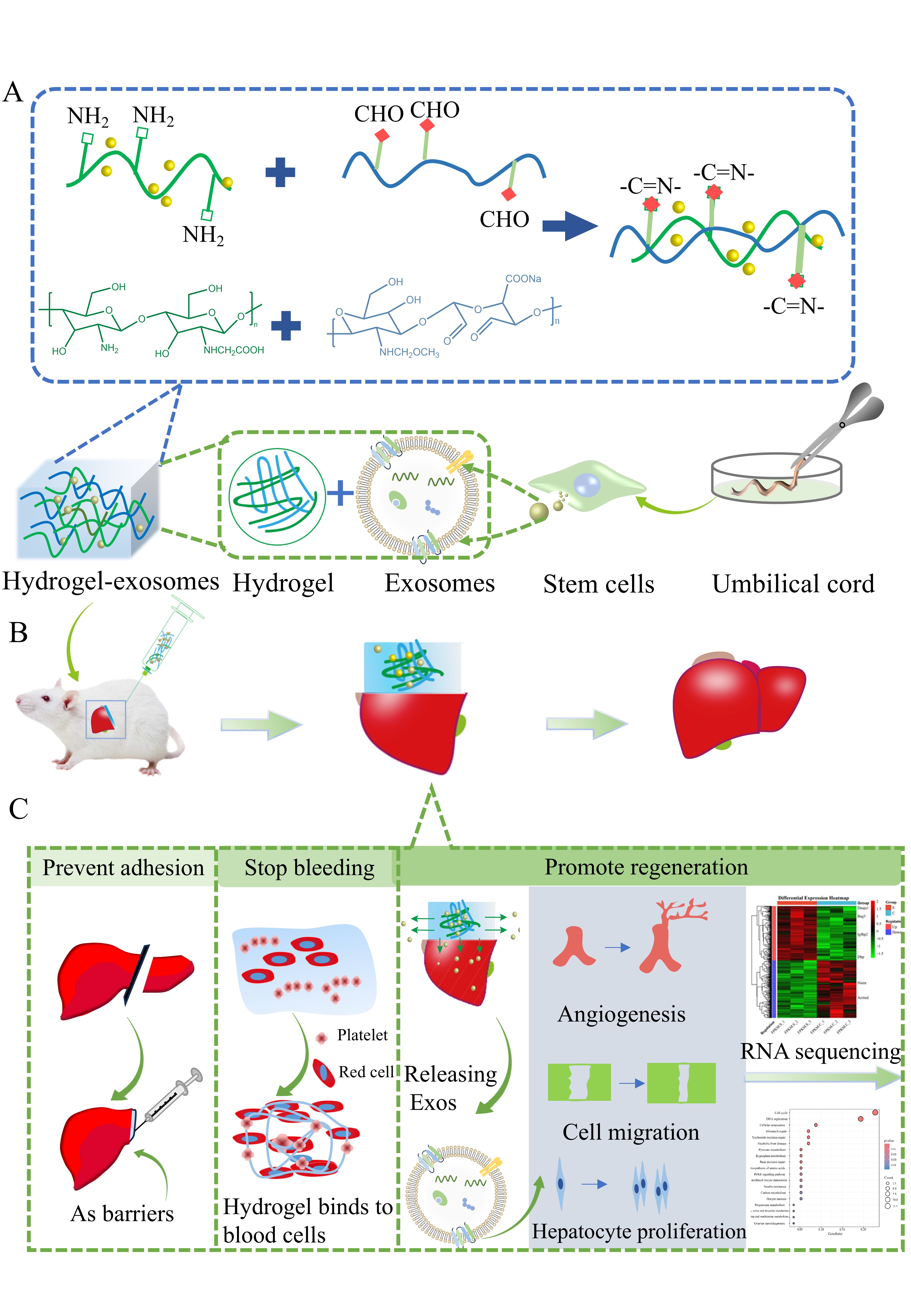
Carboxymethyl chitosan /oxidized hyaluronic acid hydrogel-encapsulated hucMSC-derived exosomes for enhanced hepatic regeneration and post-hepatectomy applications
Qiuxia Zheng2, Jia Yao1, Zongbin Sun2, Yue Zhang2, xun Li1,2.
1First Hospital of Lanzhou University, Lanzhou University, Lanzhou, People's Republic of China; 2First Clinical Medical College, Lanzhou University, Lanzhou, People's Republic of China
Lanzhou University.
Hepatectomy serves as a primary therapeutic intervention for both benign and malignant liver diseases. However, the rapid reduction in liver volume post-surgery increases the risk of liver failure and postoperative mortality. Exosomes (Exos) derived from human umbilical cord mesenchymal stem cells (hucMSCs) exhibit the potential to promote liver regeneration. Nevertheless, intravenous administration of Exos faces challenges such as poor targeting and rapid clearance. Herein, we developed a CMCS/OHA/LA-based hydrogel system encapsulating hucMSC-derived Exos (hydrogel-Exos). Release and uptake studies demonstrated that the hydrogel-Exos system enables localized Exos delivery, prolonging their retention and concentration in liver tissue. Moreover, the hydrogel exhibits favorable injectability, self-healing properties, biocompatibility, hepatic adhesion, swelling capacity, postoperative hemostasis, and reduction of postoperative intraperitoneal adhesions. Furthermore, proliferation and scratch wound healing assays confirmed the ability of hydrogel-Exos to enhance hepatocyte proliferation and migration. In vivo studies involved injecting the Exos-loaded hydrogel into the resection surface of a 70% hepatectomy rat model. Results indicated that Exos released from the hydrogel into liver tissue promoted angiogenesis and liver regeneration. Transcriptomic sequencing analysis revealed that upregulation of the DBP transcription factor may play a critical role post-hepatectomy. Thus, Exos encapsulated within the hydrogel represent a promising strategy for postoperative liver regeneration following hepatectomy.

[1] Hydrogel
[2] Exosomes
[3] Liver regeneration
[4] Hepatectomy
[5] Stem cell
[6] Sustained Release